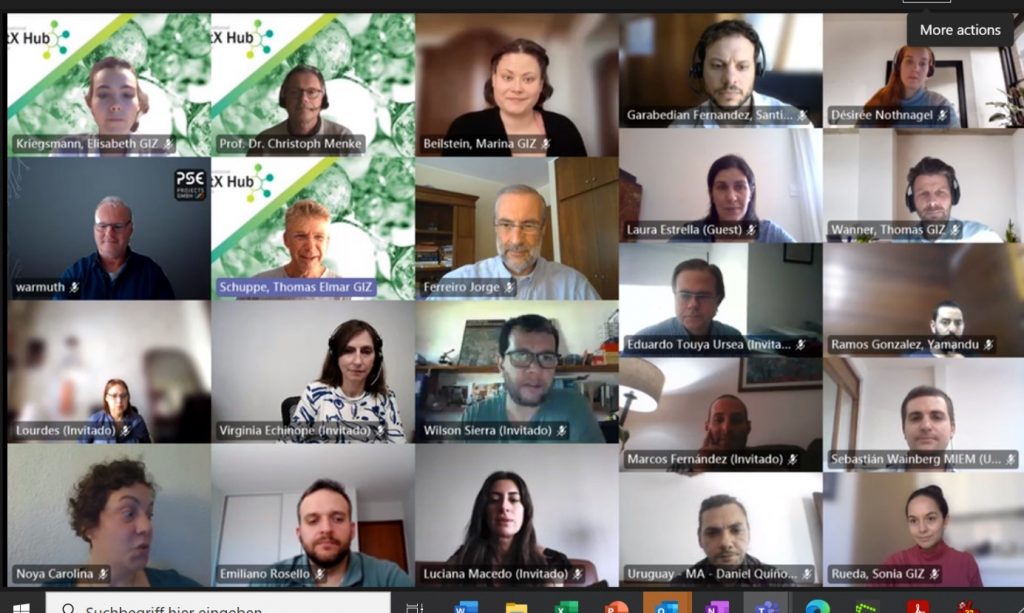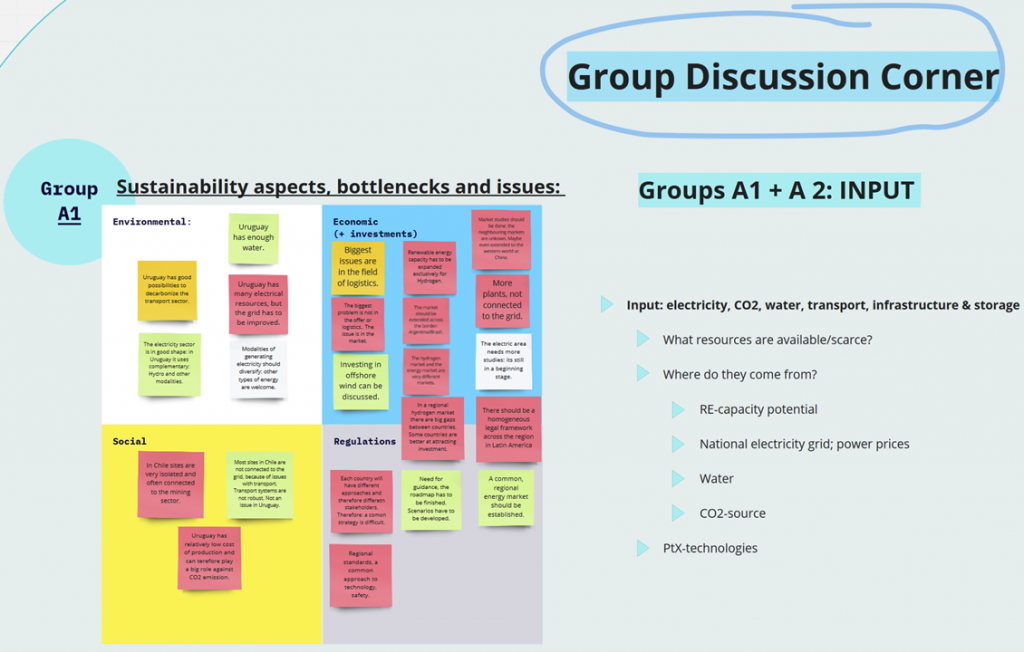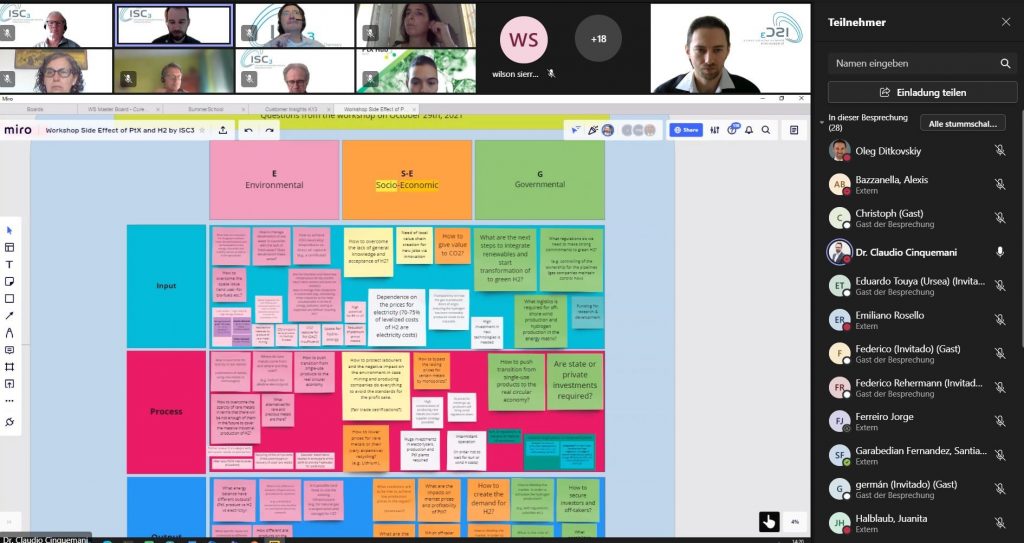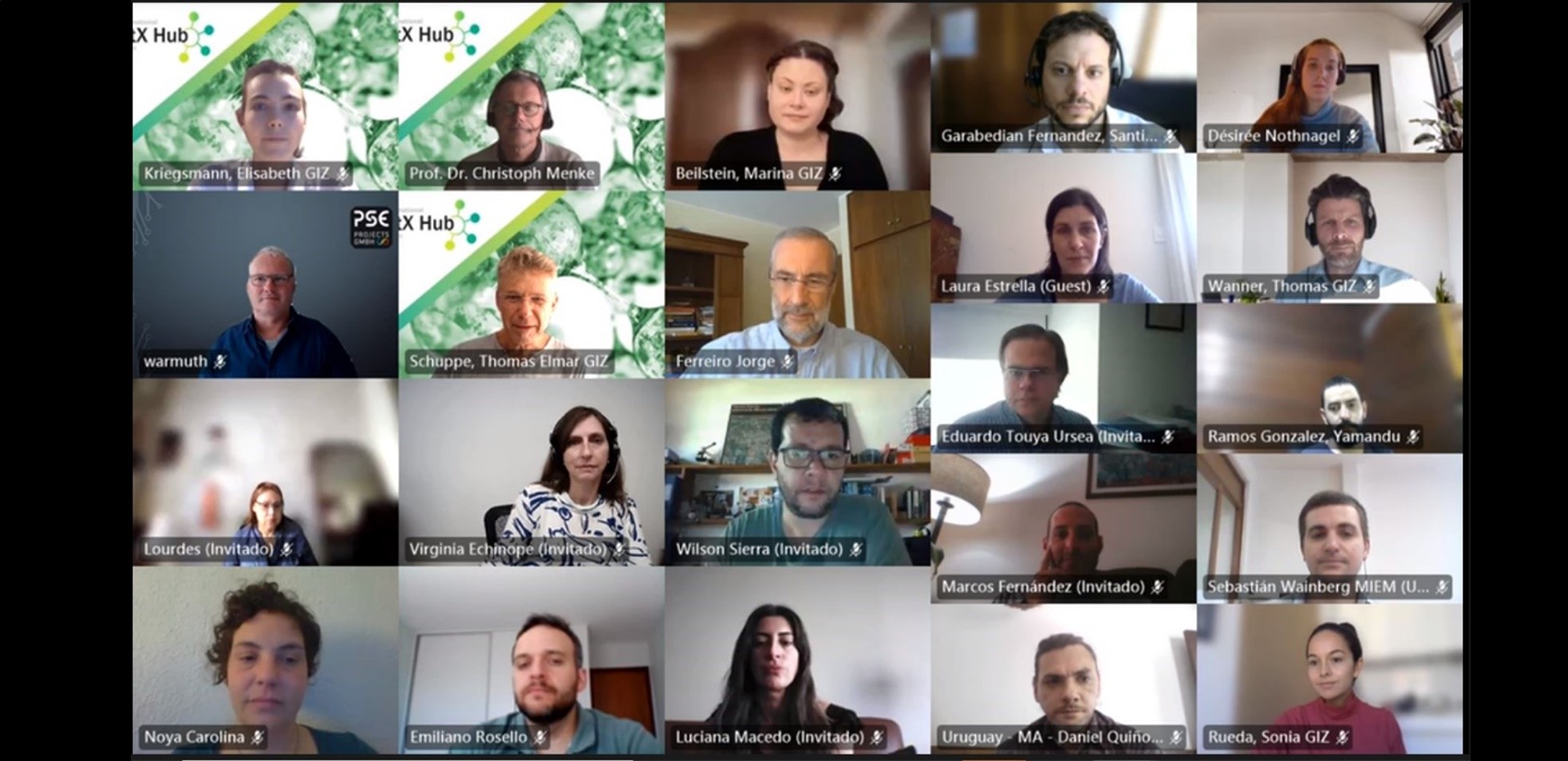Published on December 13, 2021
Tackling climate change and defossilising industries means thinking out of the box and in a holistic manner. A part of this can be the linking of disciplines: The International Sustainable Chemistry Collaborative Centre ISC3 devotes its next focus topic to the link between sustainable chemistry and renewable energies and addresses questions such as how sustainable chemistry can contribute to sustainable renewable energy systems and vice versa. The answer is Power-to-X (PtX) together with its best-known vehicle green hydrogen. This is the crucial way forward towards substitution of fossil-based energy carriers and petro-chemical products.
In light of the development of a national green hydrogen strategy for Uruguay, the International PtX Hub Berlin and ISC3 joined forces to look at the potentials of Uruguay for implementing sustainable chemistry efforts. Uruguay is the second country in the region after Chile to release such a strategy. Just like Chile, Uruguay has a very good renewable energy potential. 88% of Uruguay’s electrical energy is produced with renewable sources: 45 % wind, 32 % hydro, 8 % biomass, 3 % solar power (according to the Administración del Mercado Eléctrico).
With a virtual basic training on renewable PtX over the course of three days, ISC3 and the PtX Hub wanted to contribute to building a critical mass of well-versed experts with a high level of competence regarding PtX in Uruguay. Participants received a comprehensive two days training – developed and implemented by the PtX Hub – which was supplemented by a three-hours workshop connecting PtX and sustainable chemistry organised by ISC3 on the third day.
The workshop “Side Effects of Power-to-X and a Hydrogen Economy” was enriched by various impulse presentations from:
- Prof. K. Kümmerer (ISC3 REH / Leuphana University): Circular Economy and Metal Scarcity
Combined with the insights gained on the prior two days of the PtX training, those inputs provided a profound basis for lively group work related to:
- Input: Electricity origin, CO2 sources, water, transport, infrastructure and storage.
- Production process: Like the demand for rare metals and their origins; options of re-using and recycling of materials.
- Output: H2 chemicals, transport, infrastructure, and storage; environmental issues; existing and required regulations; circular economy approaches for solving these questions.

About 25 participants from various national ministries and institutions such as the National Administration of Power Plants and Electrical Transmissions (UTE), Administración Nacional de Combustibles Alcohol y Pórtland (ANCAP), Ministry of Industry, Energy and Minery (MIEM), Agencia Nacional de Investigación e Innovación (ANII), Ministry of the Environment (MA), Unidad Reguladora de Servicios de Energía y Agua (URSEA) and MOVÉS intensely discussed the most promising sectors in the Uruguayan economy to apply PtX technologies. Those include the chemical industry, heavy-duty and long-distance transport, energy storage and transport (NH3, methanol), possible export via the existing harbour and gas pipeline infrastructure and applications in other industry sectors in need of high temperatures. Furthermore, participants collaborated to identify potential chances and threats regarding environmental, economic, social and regulatory aspects including. sustainability criteria. The participants expressed the need for a homogenous legal and regulatory framework across the Latin American region and highlighted the advantages for collaboration between countries.
In November, after the release of the Uruguayan National Green Hydrogen Strategy, participants of the training met yet another time to discuss the national strategy and roadmap for PtX in their country. Moreover. they continued their exchange on the most promising applications for PtX within Uruguay and main drivers for a PtX transition.
The transfer workshop in November was opened with and build its questions upon presentations specific to the Uruguayan context:
- Prof. Klaus Kümmerer (ISC3 REH, Leuphana University): Sustainable Chemistry as a holistic approach
- María José Gonzalez (MIEM): Roadmap for the development of Hydrogen in Uruguay
- Beatriz Olivet (MIEM): Long-term climate strategy in energy in Uruguay
- Juan Tomaisini (ANCAP): Off-shore Wind
Based on the initial inputs and subsequent discussions, participants collaboratively worked on SWOT analyses (strengths, weaknesses, opportunities, and threats) in break-out groups leading to broader discussions about deriving a precise formulation of a national PtX strategy in Uruguay.

Two scenarios were analysed looking at domestic demand as well as at export:
- How can Uruguay develop a H2 strategy to completely de-fossilise as a country and be independent from energy imports, focus on domestic demand?
- How can Uruguay develop a strategy for H2 and focus on exports abroad?
Important strategic aspects that were considered are:
- Promoting internal markets for sustainable products and creating jobs for local population
- Establishing educational programmes and organising communication campaigns
- Building up an own chemical industry including start-up acceleration and innovation fostering
- Collaborating with neighbour countries and promoting pilot projects
- Attracting international companies and investors also for domestic market
- Creating a long-term policy on different political levels and planning of the regulatory framework
- Focusing on research and developing recycling solutions considering end-of-life plan for products (LCA)
- Establishing sufficient electricity storage
- Setting fix prices to attract producers
- Strengthening the nexus between small and dynamic and easy-to-react countries

The Hydrogen strategy in Uruguay is currently further being developed. The advantageous conditions in the country such as political and economic stability, geographical position and the extraordinary high share of renewables in electricity sector (ca. 88%), provides Uruguay with the role of a lighthouse country in the LAC region – potentially serving as an example for other countries wanting to start the transition to Hydrogen Economy.
In the next steps, different options for implementing a PtX roadmap respecting sustainability aspects have been explored and will be discussed with policy makers and directors of industrial companies to decide on programs and initiate first projects to make the second energy transition a success.
